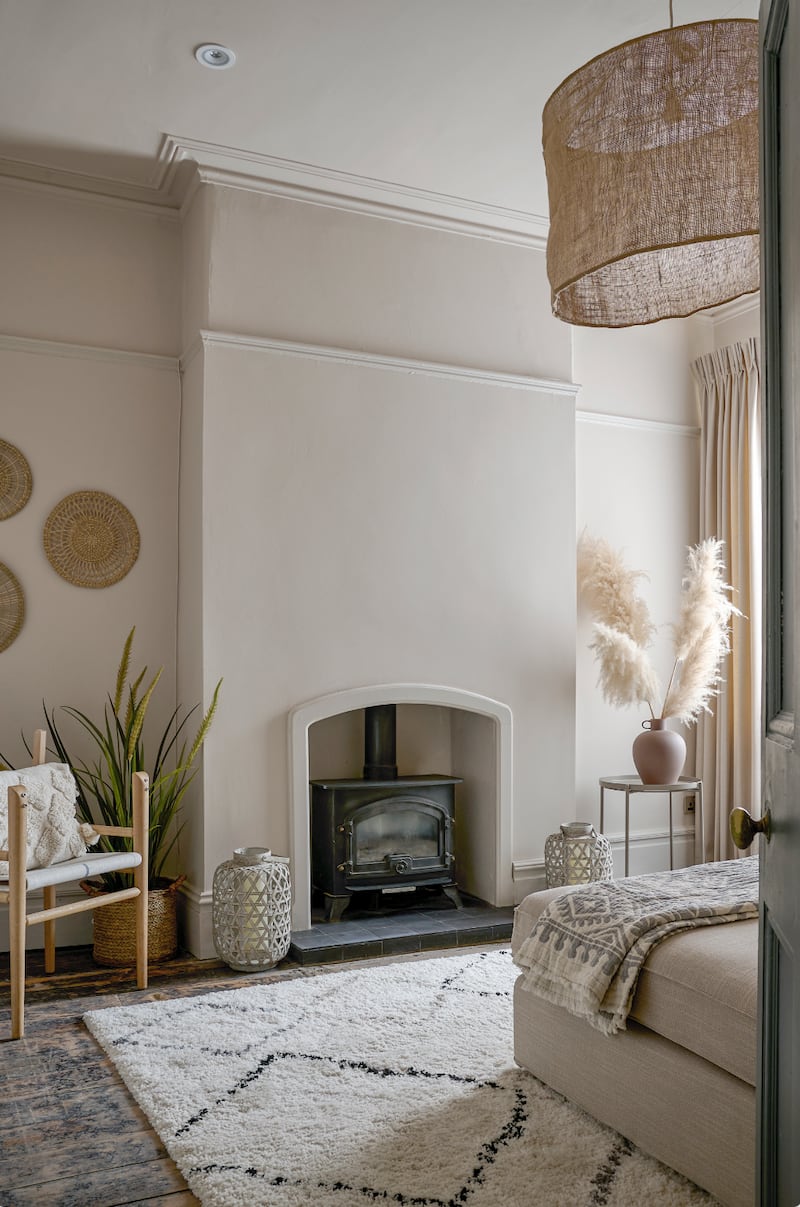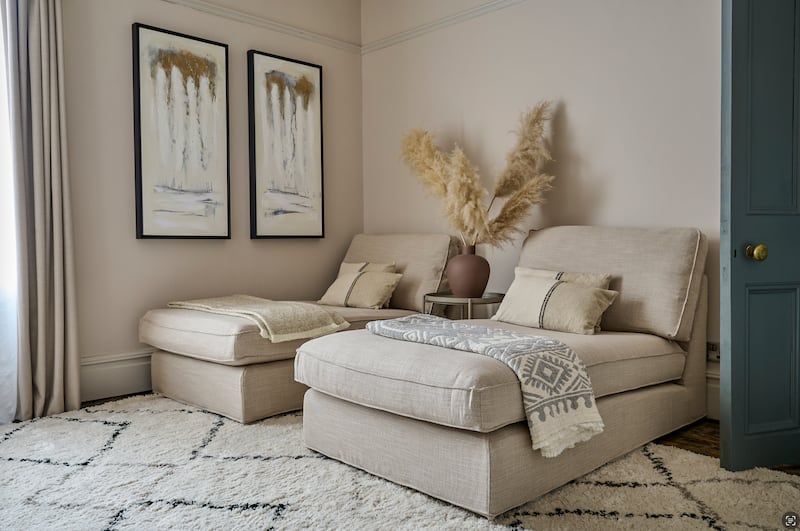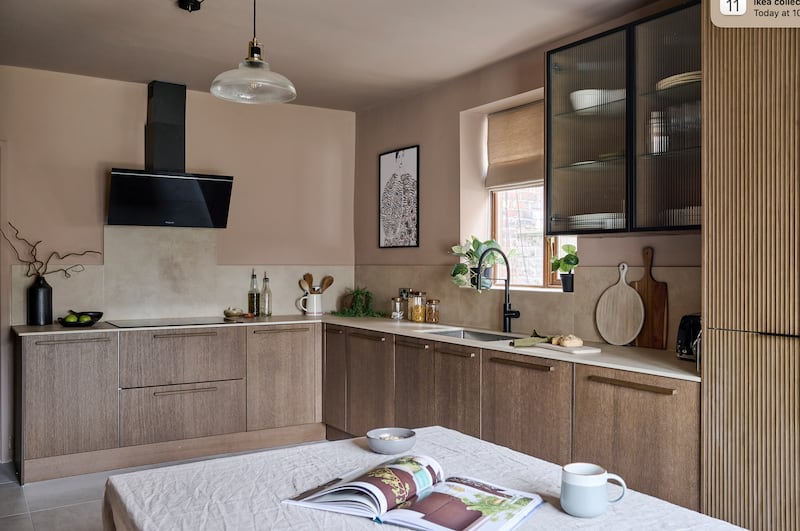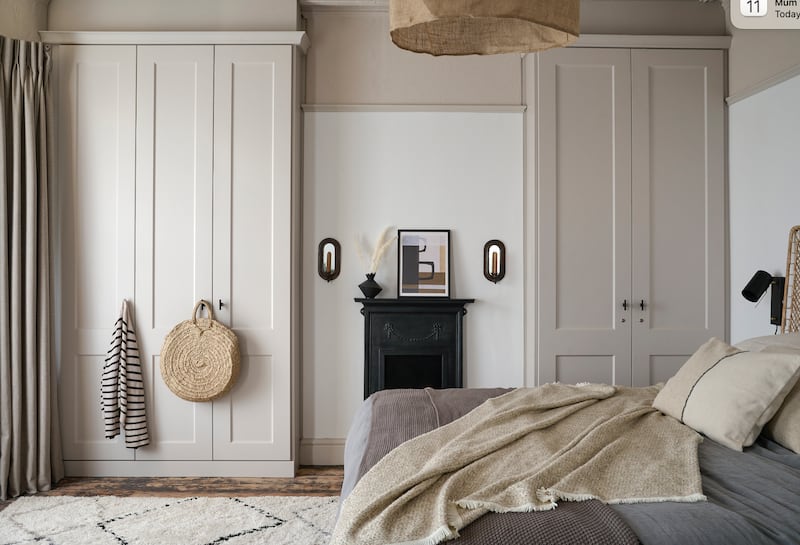Everyone should have a calm space in their home, whether it’s their bedroom, bathroom or a little nook under the stairs where they can escape from the usual chaos of family life. But some people need more than just a tranquil corner to help them to feel at peace with the world. Interior stylist Pippa Jameson can attest to this.
With 25 years of experience in the interiors industry, she always knew that she felt more comfortable in certain surroundings, so it wasn’t a surprise when she received a late neurodivergent diagnosis as she had already been aware that her daughter, who is autistic, had similar needs.
“Like many adults, it was only when I began navigating my child’s diagnosis that I recognised similarities in my own experiences,” she says. “Reflecting on my past, I struggled with concentration and often felt overwhelmed in certain environments. Once I was free from the confines of educational institutions, I found my calling and learned to adapt because it was necessary. It’s no surprise that I work for myself, as it means I have a sense of control. I can choose my own environment. My role is highly specialised, and I think in black and white. This means for work, I’m able to make clear decisions. I often wonder if my drive stems from a lower tolerance for risk.
[ I received an autism diagnosis at 34 and sat quietly with it in some discomfortOpens in new window ]
She saw proof of the importance of the environment when her young daughter was asked to leave her nursery school as they couldn’t manage her overwhelm. “This was extremely hard for us as a family, leaving me feeling lost and alone. But, as soon as we moved her to a different nursery, which was larger, filled with natural light, and quieter, she thrived – never did I need more proof that environments can change mood and behaviour.”
RM Block
That experience was a pivotal moment for Jameson, opening her eyes to how sensory-sensitive environments can deeply affect her and other neurodivergent people. “The experience made me want to fight harder to educate people on the importance of our environments and sensory design,” she says.
With this revelation, the mother of two children aged 16 and 14, who will be working with DFS at the PTSB Ideal Home Show in Dublin, October 18th-20th – you can see an example of her work on stage on October 19th – used her expertise to transform her home into a space that would offer tranquillity and security for her daughter.
“As she grew older, I realised how much her environment impacted her mood and behaviour – that is when I started to see our home differently, and the changes began,” she says. “Now we have cosy, calming spaces she retreats to when she needs time alone. Our lighting is dimmable throughout the house, so the brightness can be adjusted depending on how we feel, and both of my daughters have adjustable coloured lighting in their rooms, which gives them control over their space.
“We also got sensory alarm clocks, which changed how we woke up – with nature sounds and a gradual sunrise effect. It made such a difference, starting the day gently rather than with the usual jarring beeps of a typical alarm. I also made sure nothing in the house was too bright or patterned. Instead, we used green and neutral tones and natural materials – things that felt grounding and comforting; plants were an important part of that, too.”



Sound was another element to be considered, so background music at a mindful level was added, along with noise-cancelling headphones for all the family in case anyone needs total silence.
“It allows us to remove ourselves from the sounds around us if things get overwhelming,” says Jameson. “And on top of that, we made sure the furniture was as comfortable as possible, with throws, rugs, and a weighted blanket, which has become a favourite in our house. These soft textures don’t just offer physical comfort – they help dampen sound and make the space feel safe and enclosed.”
“We’re also lucky to have views of both the front and back gardens from every window. It creates this continuous connection to nature, a feeling of openness and calm, no matter where you are in the house.”
The experienced stylist, author and founder of interiors brand The Sensory Home, says that she made a “conscious effort to create a predictable environment”, and having seen how these changes benefited the whole family, she decided to write a book on the topic in order to help others achieve the same sense of calm.
“It was actually my neurotypical daughter who planted the seed for my book back in 2017, after she flopped herself down on the sofa and said, ‘I’m so happy at home’,” she says. “She explained that the colours on the wall, the music playing, the candle and the throws made her feel happy. That was the moment I truly understood the crucial relationship between our home environment and our mental wellbeing – it was the beginning of my book, The Sensory Home.”
The book shows readers how the senses play a huge part in the way we set up spaces, and encourages them to evaluate their own homes to see if they’re working for them or if they are, in fact, acting as triggers for overwhelm. The book is suitable for anyone interested in home decor and mindful decorating, but it’s especially helpful for neurodivergent people or families with sensory sensitivities who want to learn about sensory design.


Jameson, who is married to Stuart and lives in England, says everyone can make simple changes to their homes that will help to make them more comfortable for everyone living there.
“Sensory design is about creating spaces which engage and balance all our senses,” she says. “It goes beyond how a room looks and focuses on how it feels, sounds, smells, and even how temperature and light affect us. A room which feels calming can reduce anxiety, while a chaotic space can be overwhelming. Sensory design offers a way to improve our everyday environments and helps enhance our mental wellbeing.”
[ Sensory rooms, trampolines and gardens: the rise of autism-friendly schoolsOpens in new window ]
It’s not just homes that can adopt this approach. Jameson has been involved in several panels to educate people about sensory design in places such as schools, recommending dynamic lighting and materials that dampen noise.
“For people with sensory sensitivities, overstimulating environments are overwhelming. It’s impossible for individuals, especially young children, to work or learn if they feel overwhelmed.”
Jameson has also taken her work on a charitable front, and now offers her time, free of charge, to neurodivergent families to discuss the sensory impact of our home environments.
“I’m really looking forward to this part of my journey with The Sensory Home, making a difference for families who truly need support.”
Pippa Jameson’s tips for sensory design at home

Observe
Start by observing how your home is working for you from the moment you wake up and throughout the day. Pay attention to what you see, hear, smell, and note your thoughts and mood in response to the senses. You might realise that the sound of glasses on the coffee table has been driving you mad, or the light in the kitchen makes you feel stressed. Perhaps the synthetic air freshener is giving you headaches. Observe your senses, identify stress points, and address them individually.
Create a calm corner
Include a few meaningful items, and ensure the space is comfortable while avoiding rough textures that might be triggering. Whether you simply sit and read a book or take 10 minutes out of your day, having a calm space can make a big difference. For younger children, create small, comforting spaces with bedroom tents or makeshift camps in quiet corners – this could be as simple as draping a sheet over a couple of chairs with some fairy lights for added sparkle. Children often crave the feeling of hiding away or being cocooned. Weighted blankets also offer a sense of security, especially for those with sensory sensitivities.
Clutter-free spaces
Organised spaces help to reduce stress and anxiety. Use storage solutions that all the family can use; baskets on shelving are the easiest and simplest solution to introduce. This will help maintain a peaceful and clutter-free environment.
Comfortable furniture
Choose furniture that provides both support and comfort. Ergonomic chairs and cosy sofas enhance relaxation. Depending on whether they are sensory seekers, younger ones might enjoy age-appropriate bean bags or swing chairs.
Choose calming colours
Reduce stress by using colours known to be gentle on the senses. Neutral tones, greens, blues, and earthy shades are ideal, but this will depend on individual preferences. Avoid overly bright colours and patterns to prevent overstimulation.
Be mindful
Avoid creating strong kitchen smells from cooking while anyone with sensory sensitivities is nearby. This also includes simple things like unstacking the dishwasher or having multiple noise sources simultaneously. If your child consistently gets upset when certain noises occur, it may be due to sensory overwhelm. Similarly, think about the bedroom layouts in your home and whether you might need to reshuffle to prevent someone with sensory sensitivities from being in the noisiest room of the house.
- Sign up for push alerts and have the best news, analysis and comment delivered directly to your phone
- Join The Irish Times on WhatsApp and stay up to date
- Listen to our Inside Politics podcast for the best political chat and analysis



















